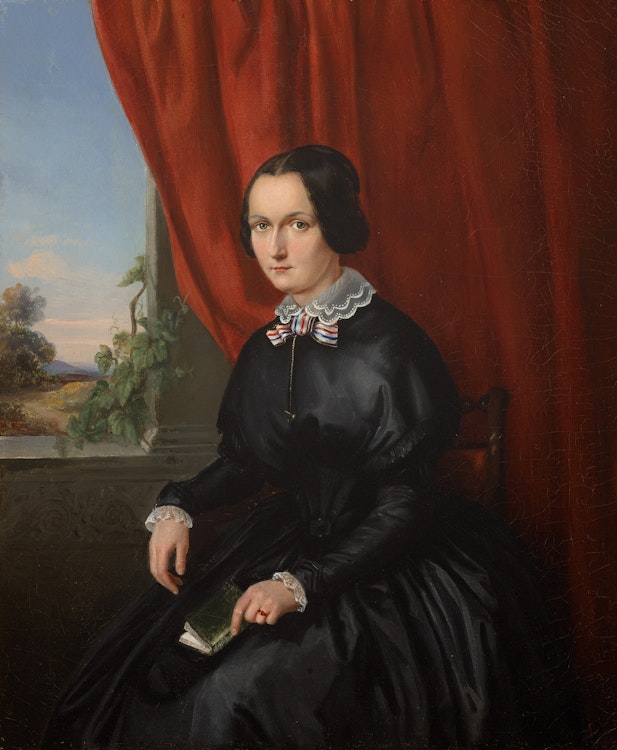Madame Lemusurier by Théophile Hamel

Théophile Hamel
Madame Lemusurier
oil on canvas
dated 1848, inscribed “T.H.” on the reverse and inscribed “Mme. M. Lemusurier” on a label on the reverse
16 x 13.75 ins ( 40.6 x 34.9 cms )
Auction Estimate: $6,000.00 - $8,000.00
Price Realized $3,500.00
Sale date: June 8th 2023
P. Labranche, Montreal
Walter Klinkoff Gallery, Montreal, 1977
Acquired by the present Private Collection, November 1977
“Collector’s Canada: Selections from a Toronto Private Collection”, Art Gallery of Ontario, Toronto; travelling to Musée du Québec, Quebec City; Vancouver Art Gallery; Mendel Art Gallery, Saskatoon, 14 May 1988‒7 May 1989, no. 3
“Hommage to Walter Klinkhoff (Part I)”, Galerie Walter Klinkhoff, Montreal, September 1988, no. 12
Dennis Reid, “Collector’s Canada: Selections from a Toronto Private Collection”, Toronto, 1988, no. 3, reproduced page 16
After settling in Montreal, Hamel quickly won the respect of the élite; he was encouraged by the three dominant social groups interested in art: clergy, politicians, and businessmen. He was appointed official portrait painter by the government of the United Canadas in June 1853, and entrusted with the high honour of painting portraits of past and present speakers of the assemblies and legislative councils. Hamel’s style was known for its verisimilitude; he had a particular talent for handling daring chromatic effects, reflections and the rendition of luxurious fabrics.
Share this item with your friends
Théophile Hamel
(1817 - 1870)
Born at Ste. Foy, Lower Canada, the son of a farmer, he entered the studio of Antoine Plamondon at the age of 17. There he served his apprenticeship (learning drawing and painting). After working in his chosen field for several years he went to London, England, and then to Rome where he studied at the Academy of St. Luke. He sketched in Florence, Bologna, Venice and Paris and did copies of a number of paintings in the Louvre. Hamel had secured commissions to do this work before leaving for Europe and financed much of his trip in that way.
When he returned to Quebec in 1846 he concentrated mainly on portraits and became well known for such work. His profession took him to Hamilton, Kingston, Toronto and even New York where gentlemen of prominence gathered for business and politics against the background of the social elite. He did most of his portraits in oils although he had done some watercolours around 1843 while he was in Europe. One of the paintings was reproduced in Paul Duval’s ‘Canadian Watercolour Painting’. We are told by several writers that Plamondon and Hamel did not do landscapes, although Hamel sometimes used them for backgrounds in his portraits.
Perhaps one of his best self portraits was done in 1857 and is now in the collection of the National Gallery of Canada. He painted the portraits of members of the Baldwin-Lafontaine ministry and speakers of the Legislative Council and Legislative Assembly in Toronto. Hamel had been commissioned to paint portraits by the Quebec government but when fire destroyed the two parliament buildings in that province these works were also lost. Hamel used rich colours in his paintings, an influence attributed to his study of the work of Rubens when he made copies of Rubens’ work. Today Hamel’s paintings are in the collections of Laval University, The Museum of the Province of Quebec; The Art Gallery of Ontario and the National Gallery of Canada. Théophile Hamel died at the relatively young age of 53. He trained many painters including Napoléon Bourassa.
Source: "A Dictionary of Canadian Artists, Volume II”, compiled by Colin S. MacDonald, Canadian Paperbacks Publishing Ltd, Ottawa, 1979

